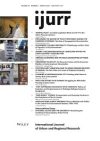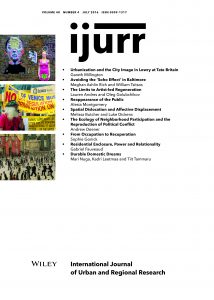Recent studies of public space in US central cities tend to focus either on (1) market-driven placemaking (privatized parks, hipster shops) in gentrifying enclaves or (2) street cultures (community gardens, hip-hop) in low-income neighborhoods. Neither focus adequately frames the ability of African Americans to shape public space as the white middle class returns to central cities. In this case study of downtown Detroit, I theorize a dialectic: the history of clashes between racial capitalism and social movements in public space reappears in the contradictory design of market-driven placemaking, which suppresses and displays cultures of resistance. White business and real-estate interests showcase downtown spaces to counter news of disinvestment and suffering in low-income neighborhoods. The legal and political legacies of civil rights and black power struggles—combined with consumer demand (black culture sells)—force them to involve black entrepreneurs, professionals and artists in placemaking. This placemaking subordinates the black urban poor, even as it incorporates their street cultures. The contradictions of placemaking shape possibilities for resistance, as shown in mundane subversions and street protests that use the downtown spotlight to call for social justice citywide. This analysis contributes to research on public space at a time when new movements are challenging public order in the financial core of US cities.

